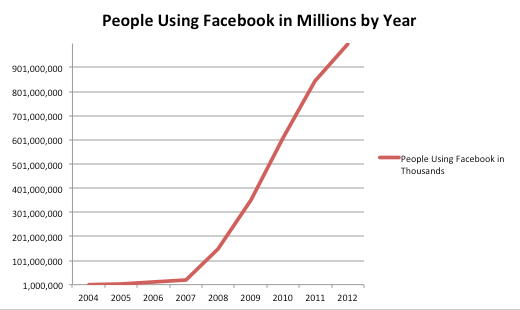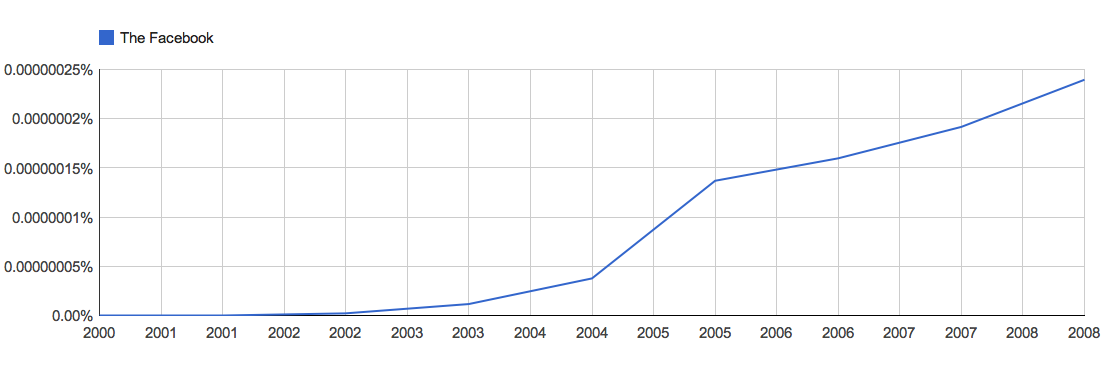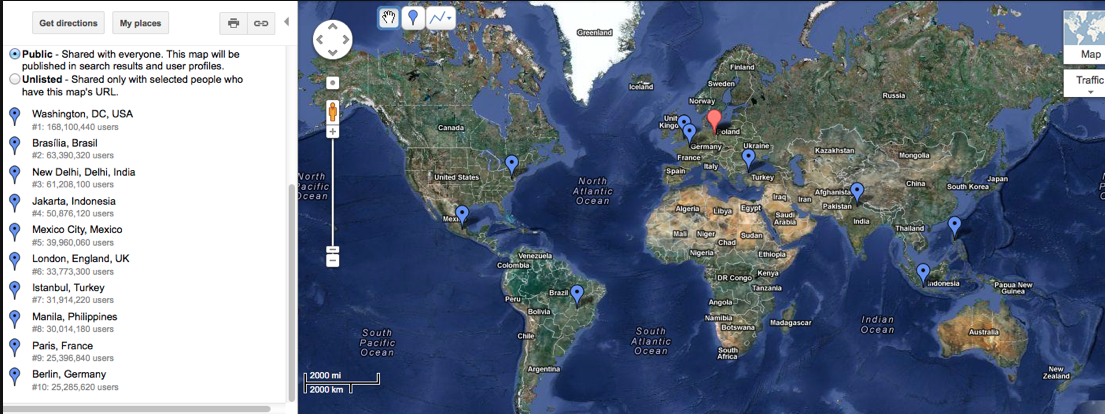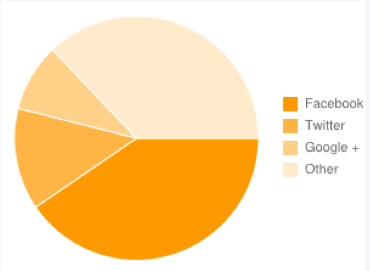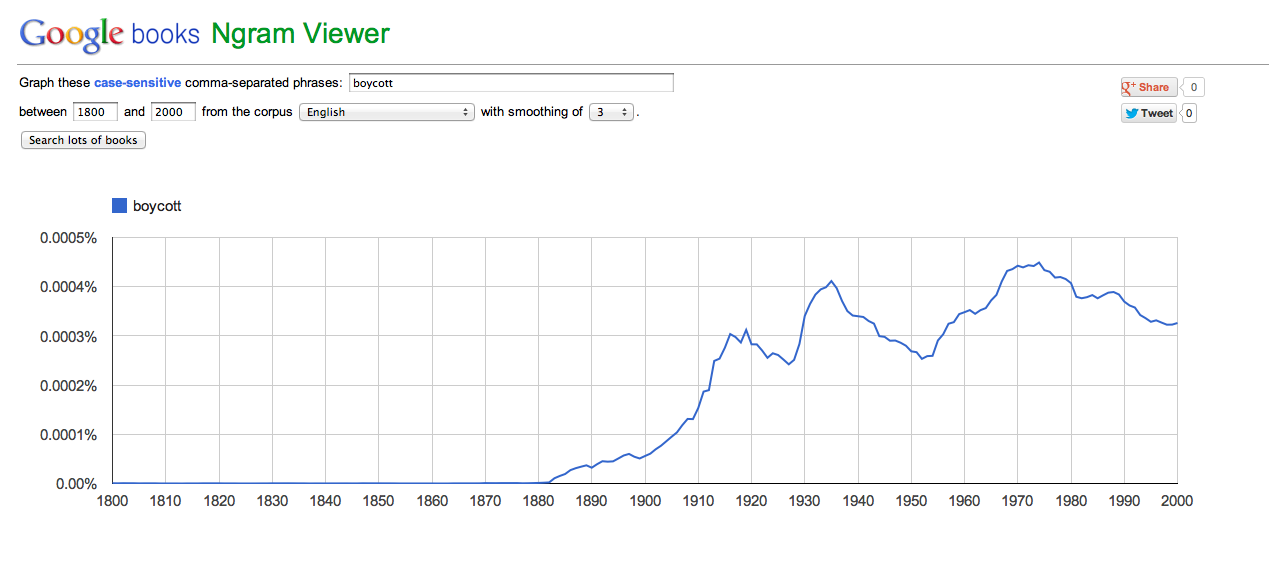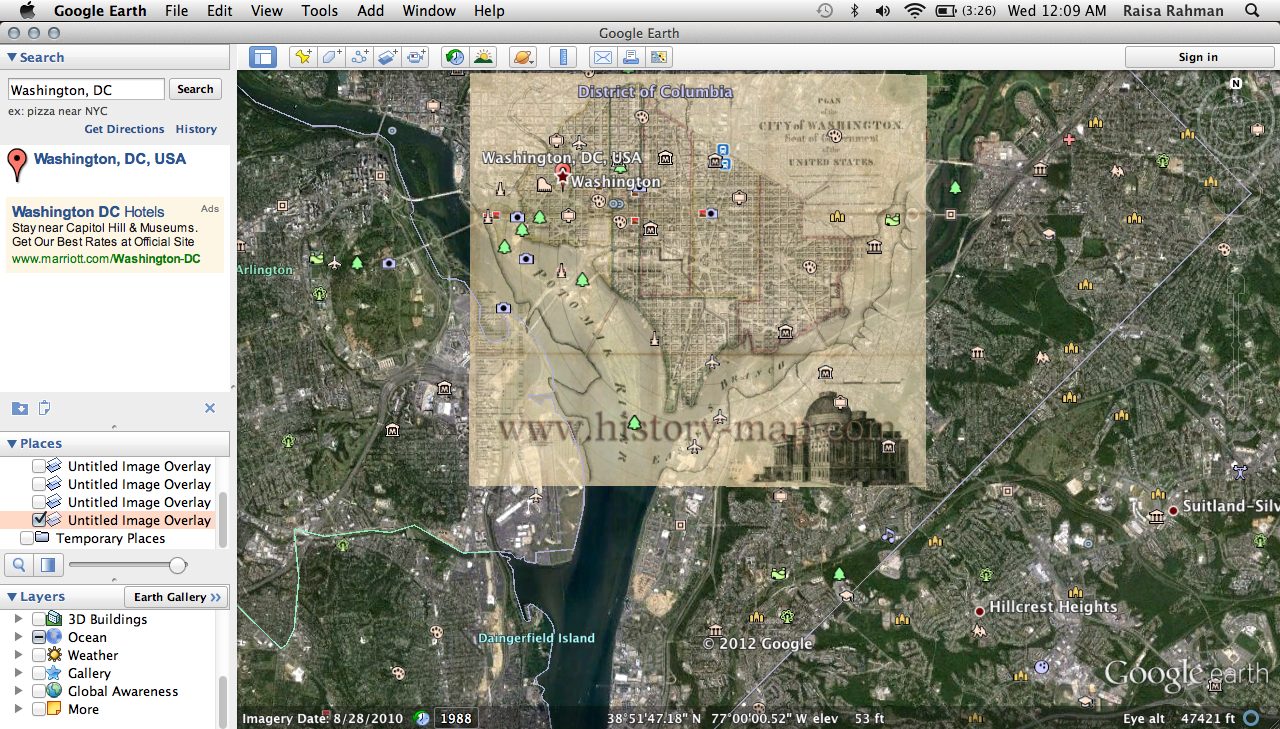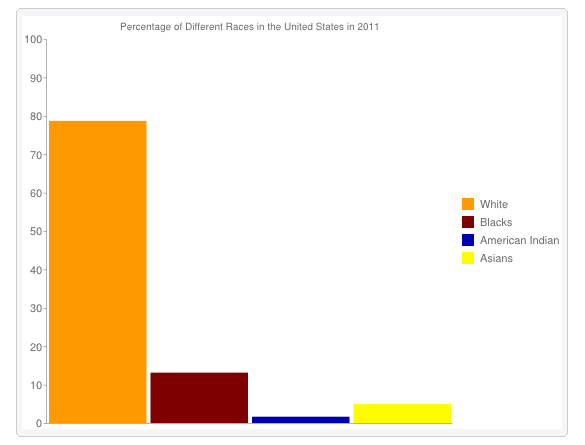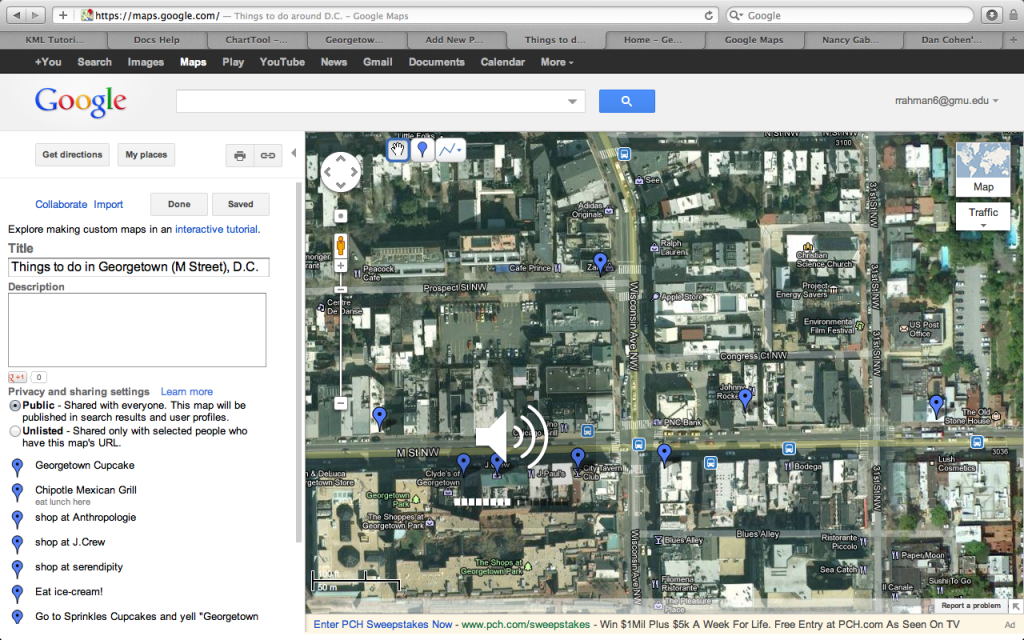The world’s leading social networking site, Facebook, has historically grown from 1 to 1 billion users in a matter of eight years. In late September of 2012, CEO Mark Zuckerberg posted a status update stating the site has reached 1 billion users. This exponential growth comes from a wide array of reasons such as user friendliness, easy accessibility, communication capabilities, and how current the site is to it’s time.
The graph above shows that the site started from 1 million users at the end of 2004, to a record breaking 1.01 billion users by September 2012.
The popularity of the site has been ever increasing since it’s launch in 2004. The site is mentioned frequently in the news, on the web, in articles, books, etc. When creating a Google books Ngram, it is evident that “Facebook” becomes more and more apparent in books as time continues to progress. The graph is a representation of the words “The Facebook” because in it’s former years, that is how it was titled. Check out the Ngram below:
One of the many reasons why Facebook is so popular amongst the masses is because it is easily accessible across all corners of the world. There are currently 212 countries using the site worldwide. Facebook is also free. If Facebook wasn’t free, it wouldn’t nearly have the amount of success it has today. Fishermen in third world countries with little or no social status or wealth, are able to hold Facebook accounts through access to the web. Because Facebook is such a global community, it has several offices spread across the world. Below is a map showing the many cities where Facebook has stepped foot in.
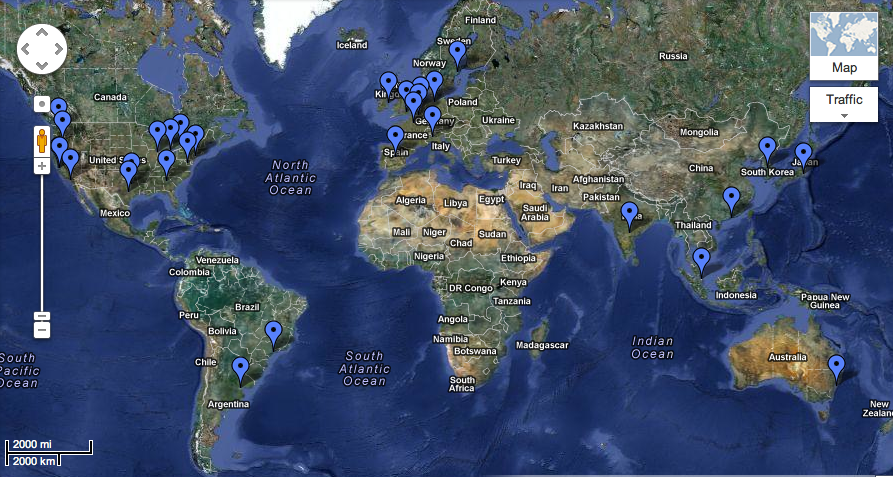
View Locations of Facebook Offices Around the World in a larger and more interactive map here.
After creating a word cloud on an article called “Study: Why Do People Use Facebook?,” it was evident which words appeared most frequently within the text. The larger the word is in the word cloud, the more times it appeared. When looking at the word cloud, it is obvious that the largest and most prominent word is “Facebook.” It is interesting to see that words such as social and self-esteem also pop out in the cloud. Of course Facebook being the largest social networking site in the world, it makes sense for “social” to be an eye-catcher. Along with “social,” “people” also stands out. “Self-esteem” comes into play when discussing Facebook’s individualization aspect. And with regards to individualization, “personality” and “self-presentation” are easily viewable as well. “Culture” is a huge aspect of Facebook’s success, and sure enough the word appears in the cloud at the bottom left corner. Check out the word cloud below:
Another reason Facebook is so popular is because of it’s user-friendliness. The interface of the site is very simple: easy to read font, blue, white, and black neutral colors, etc. Even the layout is easy to understand and maneuvar (although it has changed multiple times). Most actions such as adding a friend are done with the click of a mouse. Another neat tool Facebook has is it’s ability to be read and used in different languages, making it even more global than it already is. Check out this PowerPoint on how to change the language of your Facebook.
The site allows users to communicate with people all across the globe. Families and friends from the US are able to connect with people in different locations around the world. Facebook lets people stay in touch with others through one universal website where everyone can share as much (or little) of their lives. This connection enables people to further create a global environment. Ideas and innovations have begun and spread through Facebook. People with common interests are able to connect on Facebook. There are countless ways Facebook let’s users spread their wings. The top ten cities currently using Facebook today are represented in the map below.
View this map in a larger and more interactive way here.
Facebook seems to always be very current and up-to-date with news and events. This aspect of the site keeps people engaged and eager to revisit. Events in their personal and social lives are displayed on Facebook. Say if someone has a birthday, Facebook encourages it’s users to send a birthday wish by writing on someone’s Wall. The office Christmas party someone is attending on a given Friday night is usually displayed on the top right hand side of their home page, reminding them of the date. People often resort to Facebook as their news source. Many people found out about the death of Osama Bin Laden through Facebook statuses rather than television news. Because Facebook is the most popular social networking site, people are able to rely on it for important information. Below is a visual representation of how much people age 30 and below depend on Facebook for their current events versus other social media sites.
It is an impressive feat to have 1/7th of the world’s population together on one mean of communication. Facebook is by far one of the most innovative sites in modern history. If the site continues to build as it has for the past eight years, even more history will be made.
This project is a representation of the historical growth of Facebook thus far. To preserve this project and it’s contents, further edits may be made in the future to keep the site running, a copy of the project will be saved into a folder and also a flash drive. The preservation of this project will allow viewers to look back on this data and compare it to future data that is yet to come.


